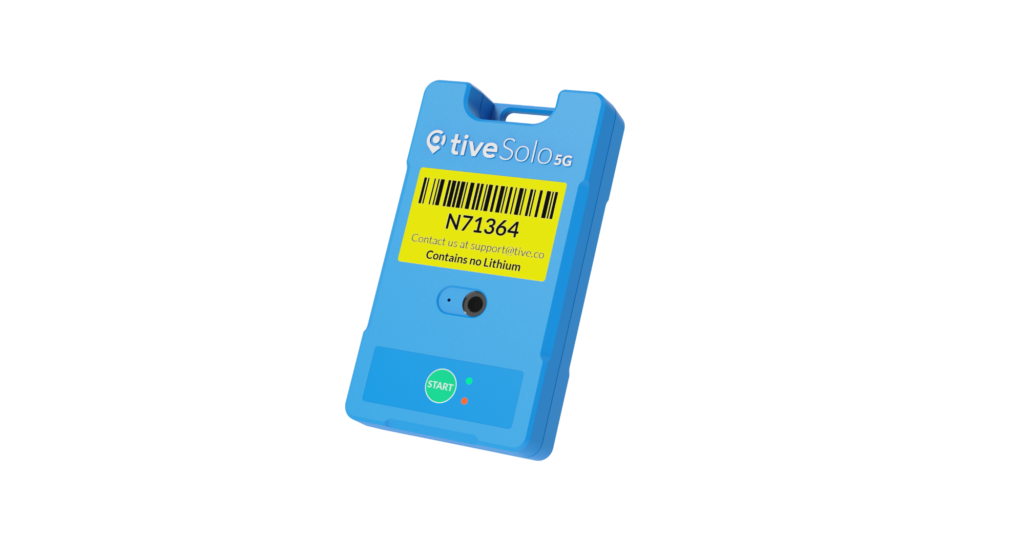Next-generation track-and-trace
17th May 2022

When every shipment matters, it adds real value to have critical real-time location and environment information at immediate hand. Logistics Business Magazine’s editor Paul Hamblin meets a track-and-trace solution with a vital extra dimension.
Track and Trace technology is now firmly moving to the next level with the increasing adoption of applications that offer much more than basic location guidance. US-founded Tive is a good example, promising real-time shipment updates including such in-depth information as location, temperature, light and shock readings. That makes it a very useful resource for fresh food and beverage, pharma and critical-shipment logistics providers, where correct regulated temperature and physical stability are vital to a successful passage. The Tive logic is that with this data immediately available to carrier and shipper alike, a cargo under threat can be saved, to the benefit of all parties.
Tive’s model seems to be finding plenty of traction, with over 100 global customers including logistics giants such as DSV, and Hellmann Worldwide Logistics. It raised $12m in series A capital funding at the back end of 2020 with a second round recently raising a further $54m.
Even London’s world-renowned National Gallery uses Tive to give reassurance when dispatching and receiving priceless artworks.
Jim Waters, Vice President, Global Marketing, tells me an entertaining tale from his office in Boston, Massachusetts about the company’s genesis. In 2015, founder Krenar Komoni – a native of Kosovo but an American citizen also now based in Boston – was intrigued by the inordinate length of time his father-in-law spent all day, including over dinner with the family, on the phone calling colleagues to check the status or locations of his business shipments. Komoni began to muse on the enormous value that could be delivered to organisations and individuals if such crucial information could be sourced at the touch of a button. And that’s precisely what he has now delivered.
A Tive journey begins at the touch of a small green button, attached to playing-card sized (96mm x 58mm, depth 19mm) plastic backing. Attach the tracker, usually via 3M adhesive (though one global multimodal freight client uses magnets) to the last pallet to go in the container. Press the button and data is transmitted in real time to Tive’s global-based data management team.
Jim Waters: “There’s method in applying the technology to the rear pallet. The temperature-control unit – or reefer – is at the front, meaning that the reading being sent back covers the whole truck, not just the front, therefore providing more reliable readings.”
From that point, temperature, light, shock and humidity are all recorded at every stage of the multimodal journey (road, sea, air and rail). Temperature accuracy is guaranteed to within ±0.5°C within a range of -20 to 60°C. Location tracking is accurate to within 10m using WiFi, GPS or Mobile network with 2G (now largely a legacy system) to 5G all covered. Shock sensitivity can be traced up to 12G impact, but with sensitivity as low as 0.5G, the team can deduce a pothole in the road as equally as a calamitous drop from a high-bay shelf.
“It’s about collaboration,” says Jim Waters. “We are there to work with the carrier and their customer to help save the shipment in the event of an excursion. We can point out where a temperature threshold might have been exceeded, if only for a few moments. If a delivery of fresh grapes is rotten within two days of arrival, we can tell all parties if something happened on the journey to make that fruit rot faster than it should have.”
Critical journeys are another must-have. “I can tell you hair-raising stories about hearts, livers and kidneys left on the tarmac when they should have been on an aircraft that has just taken off without them,” he reveals.
Tive can be customised to suit customer needs – it’s available with a lithium/non-lithium battery according to customer preference, and while single-use are in operation with many clients, a multi-use version for circular logistics processes offers cost savings.

